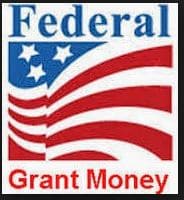FREE TRAINING
What is Real Estate Crowdfunding?
Learn how to build wealth and earn passive income in real estate while someone else does all the work.
005 School Quality & House Prices

School Quality as Driver of Home Values
At the beginning of every year, those with children start wondering where they are going to be enrolling those children in school next year. As a consequence, the residential property market starts to heat up as people buy homes in school districts that they consider desirable. Part of the calculation in making these types of decisions is balancing the relative cost of private school with the perceived additional cost of buying a home in a good school district. Steven Ross, Professor at the University of Connecticut, examines how much of the premium in housing is really associated with the performance results from the neighborhood schools, and how much because of other factors?
Neighborhood Impact of School Policy
Prof. Ross research focus is on housing and mortgage lending discrimination, on residential and school segregation, on neighborhood and peer effects, and on state and local governments. It was, perhaps, inevitable therefore that a discussion regarding the relationship between property prices and school quality should migrate through a broader discussion regarding school policy and the impact on neighborhoods and on standards, before returning to our discussion on school standards and how they relate to house values.
Impact of Schools Not So Big
Prior research found a large relationship between house prices and local school district test scores. Moving from a school district in the middle i.e. an ‘average’ school, to a school in the top 16% of schools (versus being in the top 50% - i.e. a one standard deviation from the average), could increase home values by upwards of 10%. But this earlier research did not consider other factors that might be moving this needle, such as quality of the neighborhood overall. Sandra Black, in 1999, first looked at trying to account for these differences by examining house price differences in similar neighborhoods, but that were in different school districts i.e. on where neighborhoods were split by school district boundaries. Black found differences of only 2%, rather than 10%, where schools were in the top 16% of schools, versus those in the top 50%. One possible explanation is that in the earlier days when these research papers were written, test scores were not as readily available as they are today.
Area Ethnicity a Key Drive of Values
Ross and his colleagues looked at other factors that might be impacting test scores and found a significant variable seemed to be ethnicity – that property values were more driven by ethnicity than by school scores. Property values were lower in predominately Hispanic neighborhoods, and it was this that drove values rather than test scores.
Leaders of The Crowd
Conversations with Crowdfunding Visionaries and How Real Estate Stole the Show
Discover how laws that gave us crowdfunding were solely meant to finance small companies and yet inadvertently opened the doors to allow you to invest in real estate like never before.
Read the book and listen to the actual conversations.
Impact of School 'Choice' Very Large
Though small, there is still an impact on property values because of test scores for neighborhood schools. But what is the impact on property values where parents enjoy the benefits of ‘choice’ in selecting their schools? In research where choice is a factor, what is found is that the impact on home values is, actually, very large. If only one percent of the student body living in one district remains living in that district but chooses to go to school in a different district, then overall house prices in their district of residence rise by 1%. Put another way, the entire housing stock in their district of residence rises by 1% even if only 1% of the student body elects to attend school outside of the district. Additionally, the values of homes in the districts into which these students are now attending school, these prices fall because now their families did not need to move into the district and did not ‘need to bid on housing’ to get into the school district.
Zero Sum
It is a zero sum to the house price market overall. Home values fall 'in the places with the best schools that presumably had a price premium, and [rise] in the places with worse schools that presumably had a price discount,’ says Ross. The important distinction between Black’s earlier study that showed a small house price difference between school districts with different school test scores, is that the latter studies show a significant impact in the residential housing market from allowing families to choose where to send their children to school. In fact, an important difference is that the incomes of people living in those districts that have the poorer schools, actually rises when you allow for school choice. But this is not the only change: Revenues now coming into these poorer districts also rises because higher income families are moving into the districts and so, presumably, paying more in taxes, spending more money locally, and taking greater care of their properties and neighborhoods.

How to Fund Your Deals
7 Steps to Raising Equity Online
Policy Implications
From a policy perspective, school test scores are not that important as a determinant of house prices. Moving one standard deviation in quality of school (from top 50% to top 16%), has less of an impact than adding a bathroom, for example. But it does have a big impact on who is willing to live in a particular jurisdiction, which itself can have a big impact on a neighborhood, and that when you allow for choice, this bifurcation of neighborhood differences between richer and poorer, is reduced. On the other hand, if you are a planner and you want to see neighborhood improvements, improving school quality does have an impact because it draws in people of higher socioeconomic standing, and this can lead to improvements in neighborhood quality. So one way to improve an area that is in decline, if improving the schools is too long term or financially impractical, might be to allow for residents of that area to choose which school to go to. This would also draw in higher income residents, which in turn would improve the area. But although ‘choice is a win’, it may simply allow for neglect of already failing schools.
When you look at the improvements in student performance from those kids who win lotteries to get into better school districts, we see unequivocally that those kids do better. So the experiment with choice combined with magnet and charter schools seems certainly to be working. That said, there are a limited number of resources and so kids are going to be left remaining in the public schools in those districts with lower academic standards, and the big question is how to accommodate these kids. One way to do this is to impose high stakes testing on schools and results have shown that this has a substantial positive impact on the quality of these lower standard schools.


Federal Grant Incentives
From a national policy perspective, however, the government does not have much of an impact on education because most spending is driven at the state and local level. The way past administrations have attempted to maneuver states in the direction they have wanted, is to have been to offer grants to those states producing results that align most closely with their own goals – which in the case of the Bush and Obama administrations, has been in the area of accountability. These administrations looked at proposals from the states that articulated how they were going to deal with failing schools, including Title 1 schools, and those that failed ‘no child left behind’ standards for two years in a row that then went to choice options, for example.

Choice - Through Tax Credits
What is being seen as coming out of the Department of Education under Betsy DeVos is an enabling of choice - but within the private school system, like charter schools, not within the public sector. The Administration is also talking about allowing for ways to navigate the idea that incentives can be provided for faith based schools to attract students. This could be through tax credits so that someone can make a wholly deductible donation to a faith based school that is a 100% deduction against their tax liability. On the face of it this is a good thing. Provide a mechanism whereby people who cannot otherwise afford to go to a private school may be able to get in because that school now has a scholarship fund available to it. The problem is the tax credit, which is not equitable, especially if it is a 100% tax credit, even it is capped, means that private schools can go to donors and solicit donations that will cost the donor nothing, because it is just a reallocation to that school of dollar for dollar taxes that the donor would otherwise have been paying anyway. The enables the private citizen to decide exactly where these tax dollars are to go and this has been largely how DeVos has been promoting her programs.
Conclusion: Schools vs. Home Value
Returning to the question of the relationship between school quality and house prices, the conclusion is that the relationship is small, and is in fact more driven by who is living in the districts with the good schools. With the implementation of choice for families as to where to send their kids to school, the impact on house prices is likely to be much higher, and so certainly something to watch for in the coming months and throughout the years of the school career of your children.
While it may cost a little more to live in a school district with higher test scores, the extra cost is driven in large part by the socioeconomic characteristics of that neighborhood, and less so by the test scores themselves. Watching for where the opportunity to choose which school your children attend might provide you with better value for money in terms of housing, and equally, if you are already in a good school district and choice is offered in your area, you might see your home value negatively impacted.
RELATED PODCASTS













